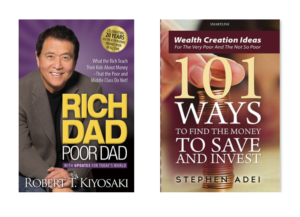Recently, I found myself looking at a movie poster thinking, “what weird content” and was quickly taken aback.
Not because the poster was that appalling, but because I referred to it as “content.”
A great marketer and friend of mine once wrote, “everything the light touches is content” — and she’s right.
Turn back the clock to 2008 and when you heard the term “content marketing,” people were most likely referring to written blogs, but the landscape has expanded and evolved dramatically in the past decade.
Today, content takes the form of video, imagery, quizzes, social media stories, GIFs, Google Ads, printed posters, and even words across a t-shirt.
If your organization isn’t investing in it in one form or another, it’s very much in the minority.
According to the “B2B Content Marketing 2019” Report from Content Marketing Institute and MarketingProfs, 58% of marketers reported spending more on content creation in 2018 than in 2017.
Despite challenges from SEO/search (61% of marketers said they’re concerned about these), social media algorithm changes, and hurdles turning content into a revenue stream (noted by 41%), the industry is clearly only growing.
With this in mind, below I’ve gathered 33 new and eye-opening content marketing statistics to give you insight into the current competition and help you shape your strategy for 2019.
Content Marketing Strategy Statistics
1. In 2018, only 39% of content marketers have a documented content marketing strategy. That number, however, jumps to 65% among top performing organizations. (CMI & MarketingProfs)
2. Despite concerns about algorithms and organic reach, only 3% of B2B marketers have decreased their social media use in the past year. 61% have increased. (CMI & MarketingProfs)
3. 54% of marketers feel they’re not maximizing their use of Instagram to achieve their goals. (Contently & Libris)
4. Only 54% of B2B marketers are using content to “delight” and build loyalty with existing clients/customers. (CMI & MarketingProfs)
5. 64% of B2B marketers place importance on building relationships with influencers (i.e. brand advocates, journalists, etc.) (CMI & MarketingProfs), and 65% of B2B buyers prefer credible content from industry influencers (Demand Gen Report 2018 Content Preferences Survey Report)
Yet…
6. Only 24% of B2B marketers are actually partnering with others to expand their audience reach. (CMI & MarketingProfs).
7. Only 27% of B2B marketers are using content syndication/promotional tools. (CMI & MarketingProfs)
8. 75% of content marketers report using technology to gain insight into how their content is performing, while only 56% use it to gain insight into audience preferences and behavior. (CMI & MarketingProfs)
9. 90% of the most successful B2B content marketers prioritize their audience’s informational needs over their own sales/promotional message. (CMI & MarketingProfs)
However…
10. Only 42% of B2B content marketers are actually talking to customers to understand their needs when it comes to content. (CMI & MarketingProfs)
Audience Behaviour & Preferences
11. 71% of buyers/readers say they were turned off by content that seems like a sales pitch. (Economist Group’s “Missing the Mark”)
12. 71% of B2B buyers said they consumed blog content during their buyer’s journey. That’s up from 66% in 2017. (Demand Gen Report 2018 Content Preferences Survey Report)
13. 64% of B2B buyers noted they give more credence to peer reviews, user-generated feedback, and third-party publications and analysts over that of brands. (Demand Gen Report 2018 Content Preferences Survey Report)
14. 64% of B2B buyers report they would like to see content organized by industry on company websites, followed by business role (52%), vertical (46%), size of organization (18%), or location/region (14%). (Demand Gen Report 2018 Content Preferences Survey Report)
15. 52% of buyers strongly agree that if brands packaged relevant content together, it would help expedite the research phase. (Demand Gen Report 2018 Content Preferences Survey Report)
16. Roughly 84% of buyers said they either frequently or occasionally access business-related content on their smartphone. (Demand Gen Report 2018 Content Preferences Survey Report)
17. 66% of B2B buyers strongly agree that companies should make it easier to access their content, by using fewer form fields, better mobile optimization, etc. (Demand Gen Report 2018 Content Preferences Survey Report)
Content Marketing Mediums & Tactics
18. In 2018, B2B marketers rate blog articles as the most effective content format in the awareness stage, whitepapers during consideration, and case studies during decision. (CMI & MarketingProfs)
19. 62% of marketers use stock photography/videography for their content. (Contently & Libris)
20. 33% of marketers report custom video drives the most engagement out of all visual content for them, but only 6% reported live video specifically (*TRIVIA ANSWER*). (Contently & Libris)
21. 64% of B2B marketers increased their use of audio/visual content in the past year, but only 43% of marketers overall actually used/developed video snippets. (CMI & MarketingProfs)
This may be because…
22. 81% of respondents claim video is still the hardest type of content to produce (Contently & Libris)
(Note: Pst… We can help with that.)
23. 70% of marketers reported that content incorporating visuals assets performed better than those without. (Contently & Libris)
24. Only 7% of B2B marketers report using chatbots in their marketing; Only 4% are using AI. (CMI & MarketingProfs)
25. 87% of marketers are using still email to nurture their audience, while only 45% are using storytelling. (CMI & MarketingProfs)
25. Only 23% of marketers are incorporating interactive features into their content; That number only rises slightly to 37% among top performers. (CMI & MarketingProfs)
26. 74% of B2B marketers created long-form written content in the past year. (CMI & MarketingProfs)
27. Only 37% of people dedicated time to producing social media story content in the past year. (CMI & MarketingProfs)
28. 64% said they prefer podcasts at the top-of-the-funnel, while 48% said webinars were valuable to them in the mid-stage of their buying journey. (Demand Gen Report 2018 Content Preferences Survey Report)
Content Marketing Distribution Statistics
29. 71% of the most successful b2b content marketers are using paid methods to distribute content, compared to only 55% of the least successful. (CMI & MarketingProfs)
30. 80% report paid distribution as an effective way to attract a new audience, while 65% report it as an effective way to generate traffic when organic isn’t delivering. (CMI & MarketingProfs)
31. 70% of marketers are using paid distribution on social media; 64% are using PPC or search engine advertising. (CMI & MarketingProfs)
Content Marketing Budget & Reporting Statistics
32. Over 50% of marketers expect to increase their content marketing budget in 2018. (CMI & MarketingProfs)
33. When asked if they’re tracking their content marketing ROI, 51% of marketers either said “no” or “unsure.” — Only 25% report being extremely proficient in tracking their content marketing metrics overall. (CMI & MarketingProfs)
Set the Scene for 2019
The new year will be here before we know it and in our volatile industry, when the calendar turns a page, your strategy will likely need to as well. So, don’t phone it in! Use the statistics above to inform and guide some game-changing content marketing experiments in 2019.













 Take a look at these two financial self-help books, for instance. Both books teach the principles of saving and investing money. But, can you guess which title sold more copies?
Take a look at these two financial self-help books, for instance. Both books teach the principles of saving and investing money. But, can you guess which title sold more copies?










